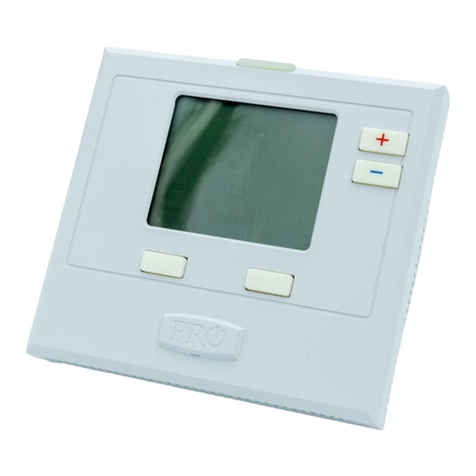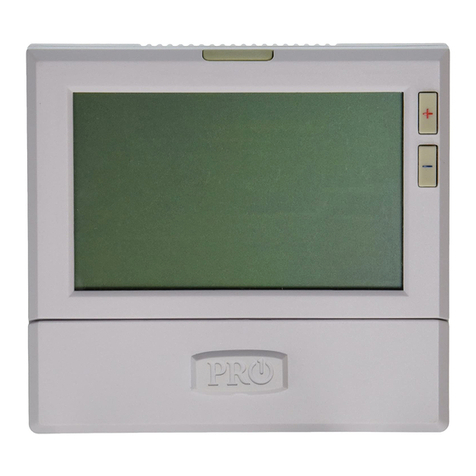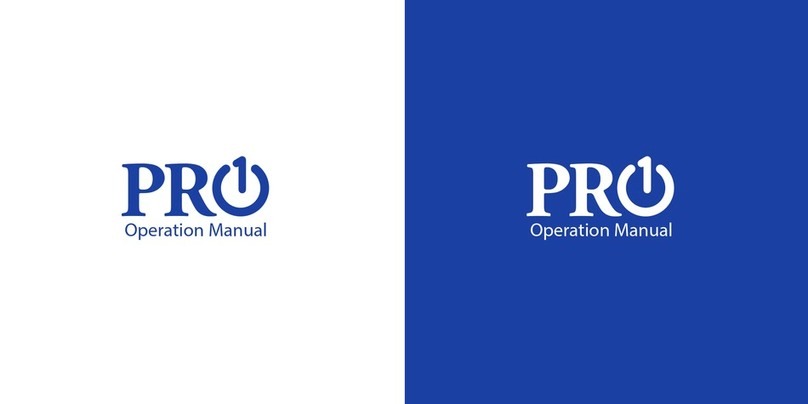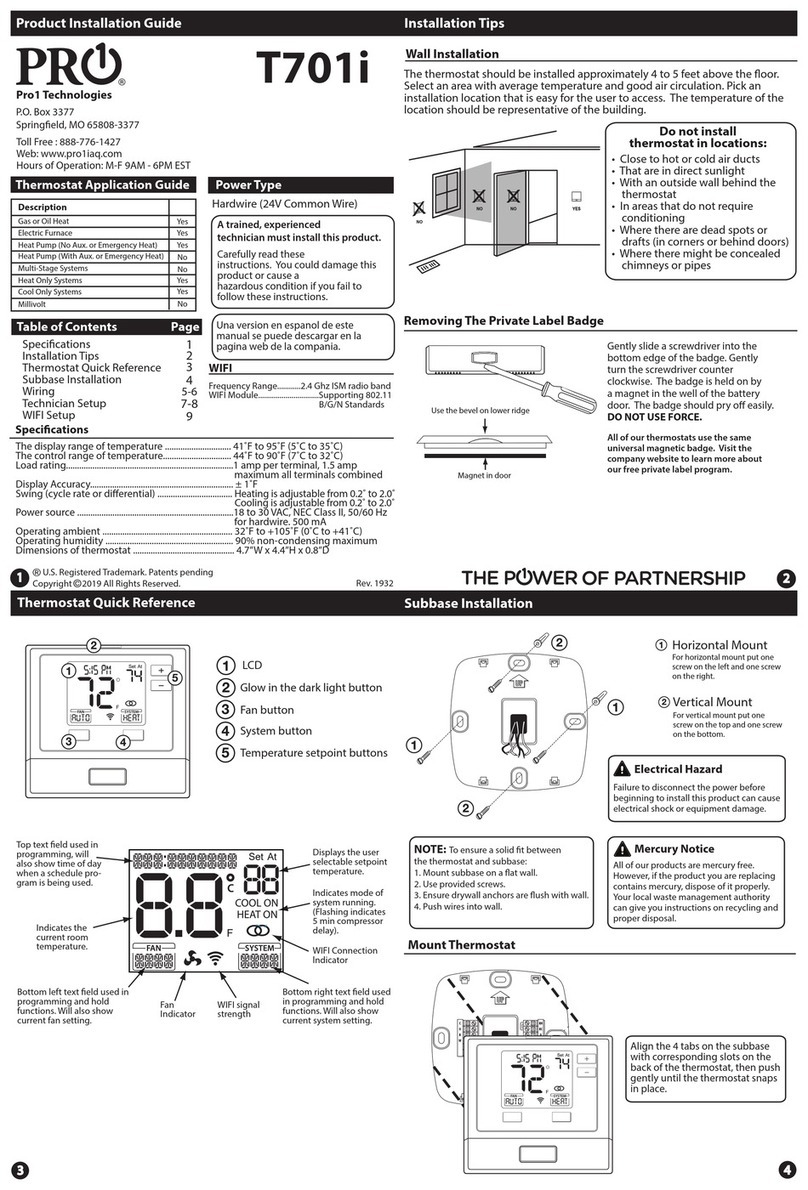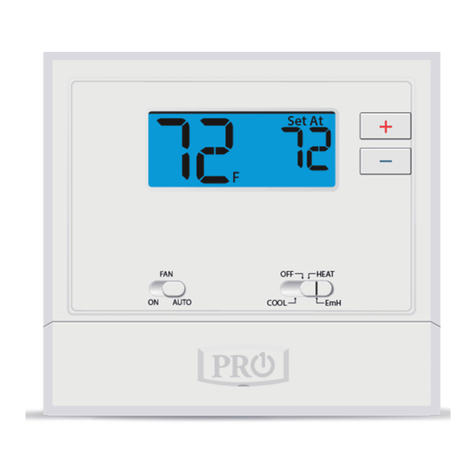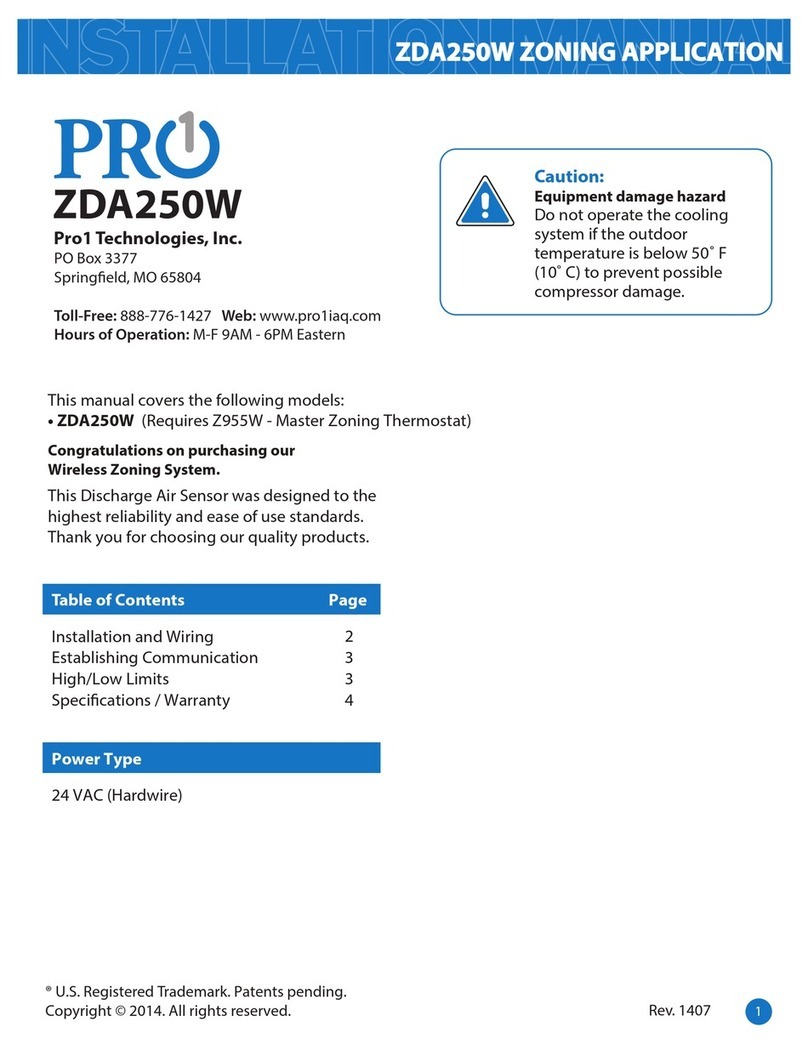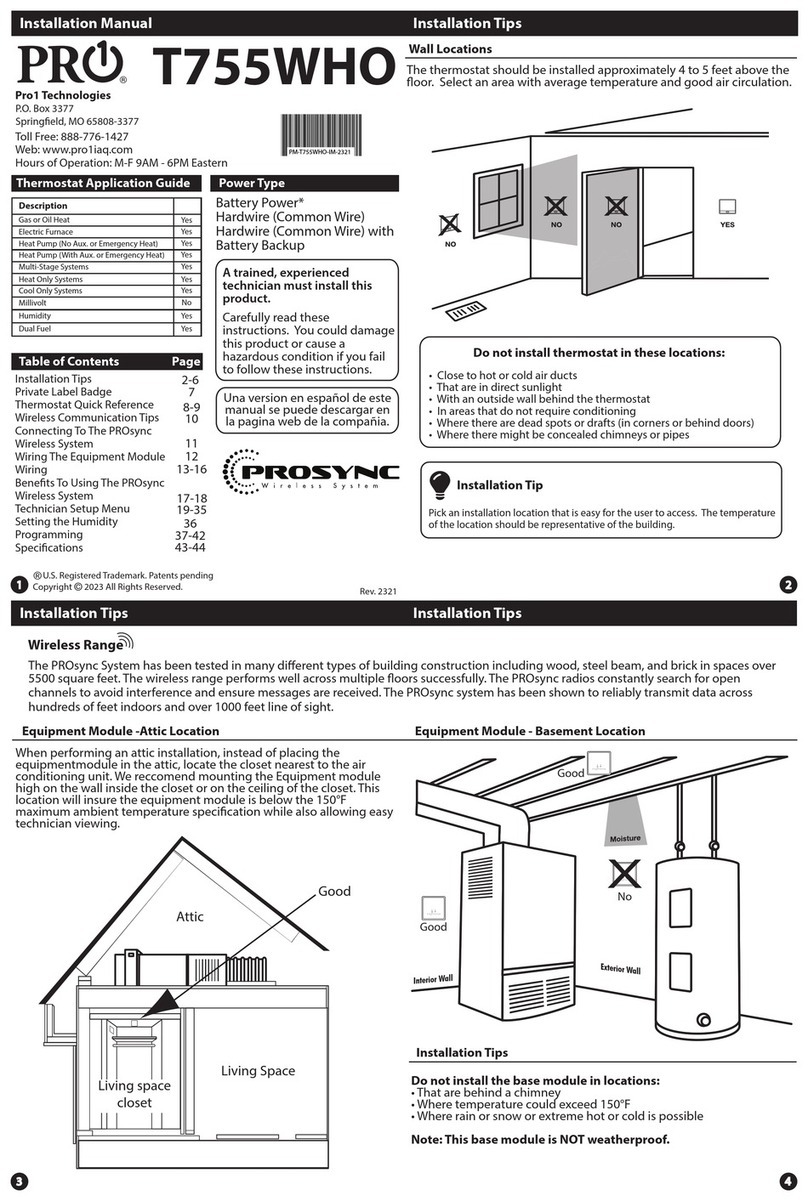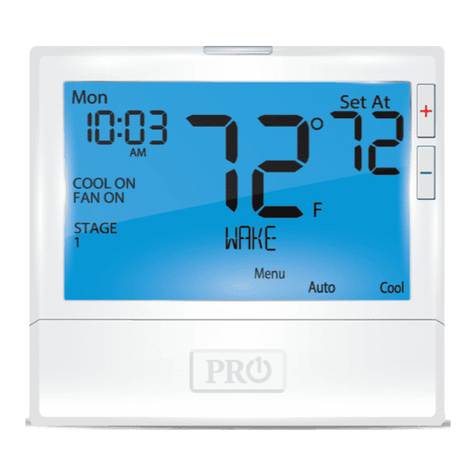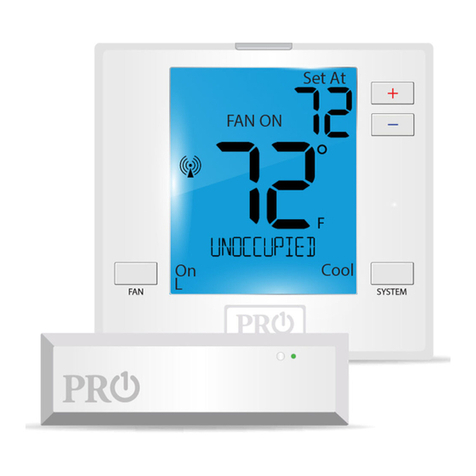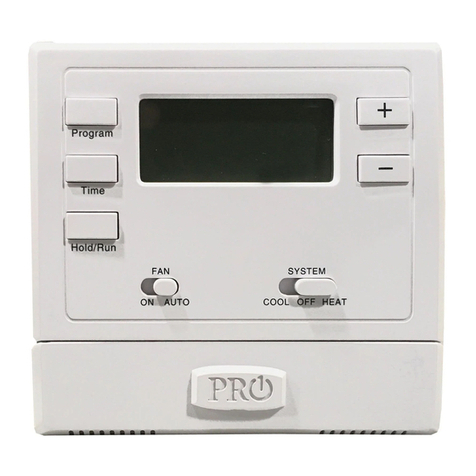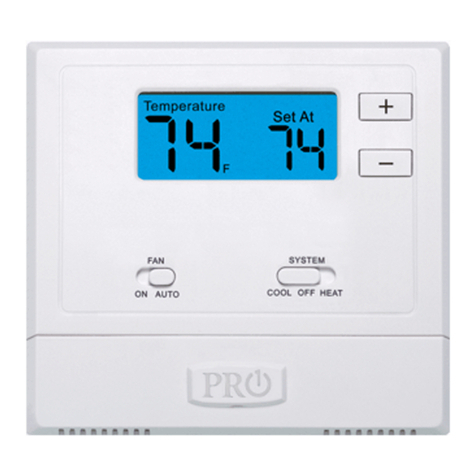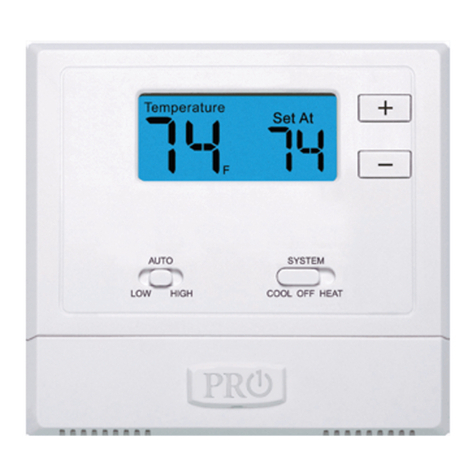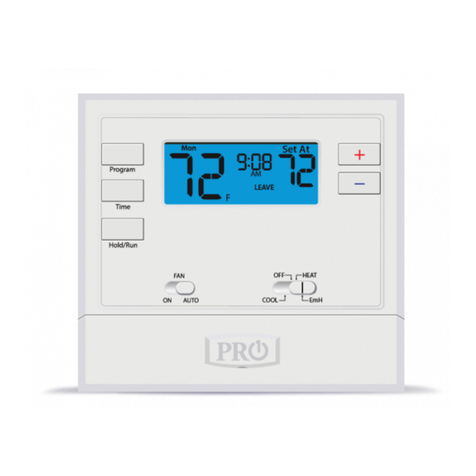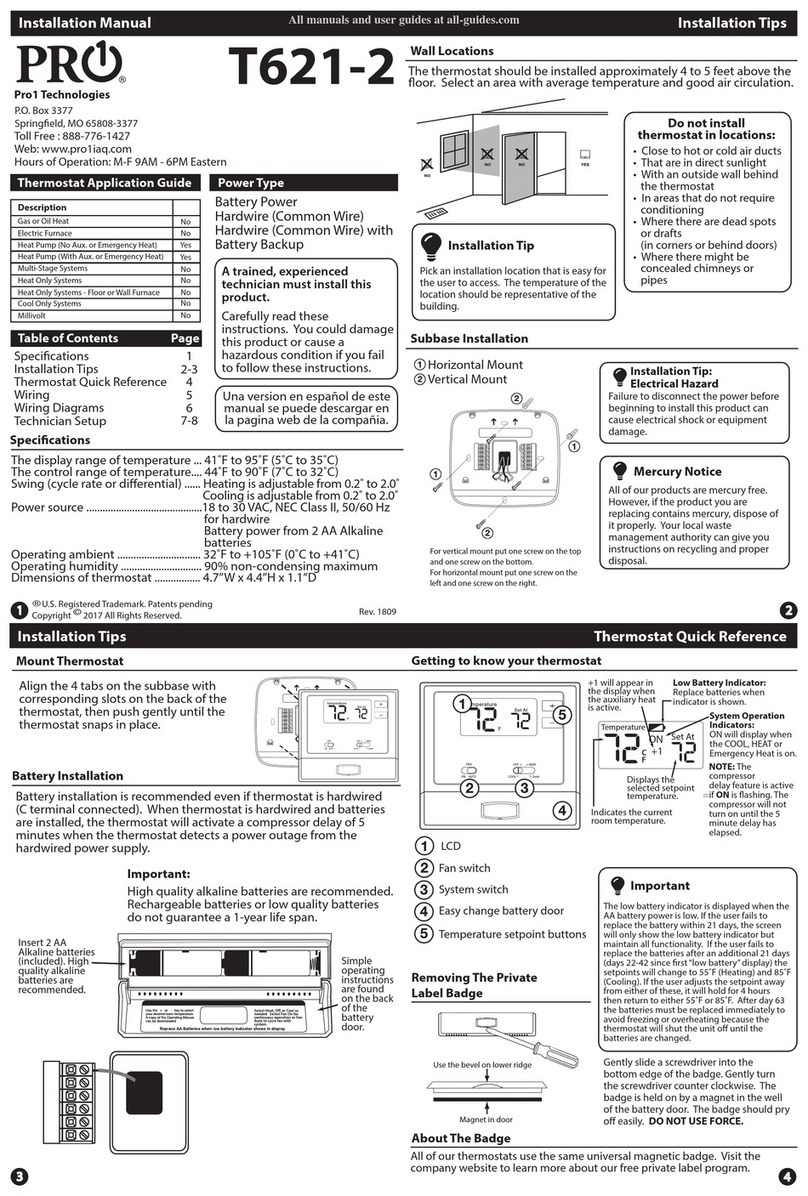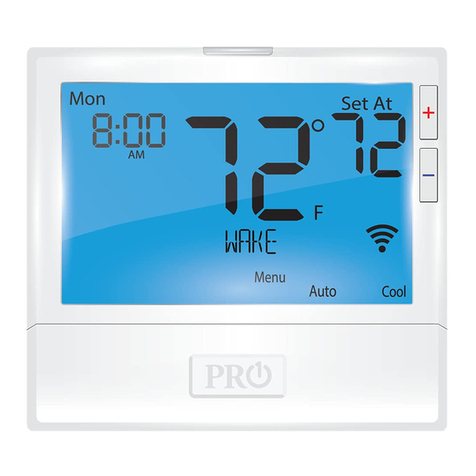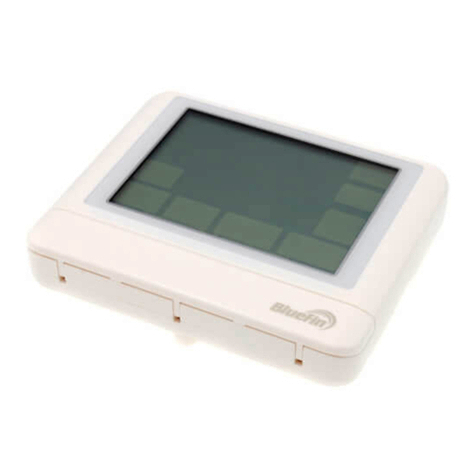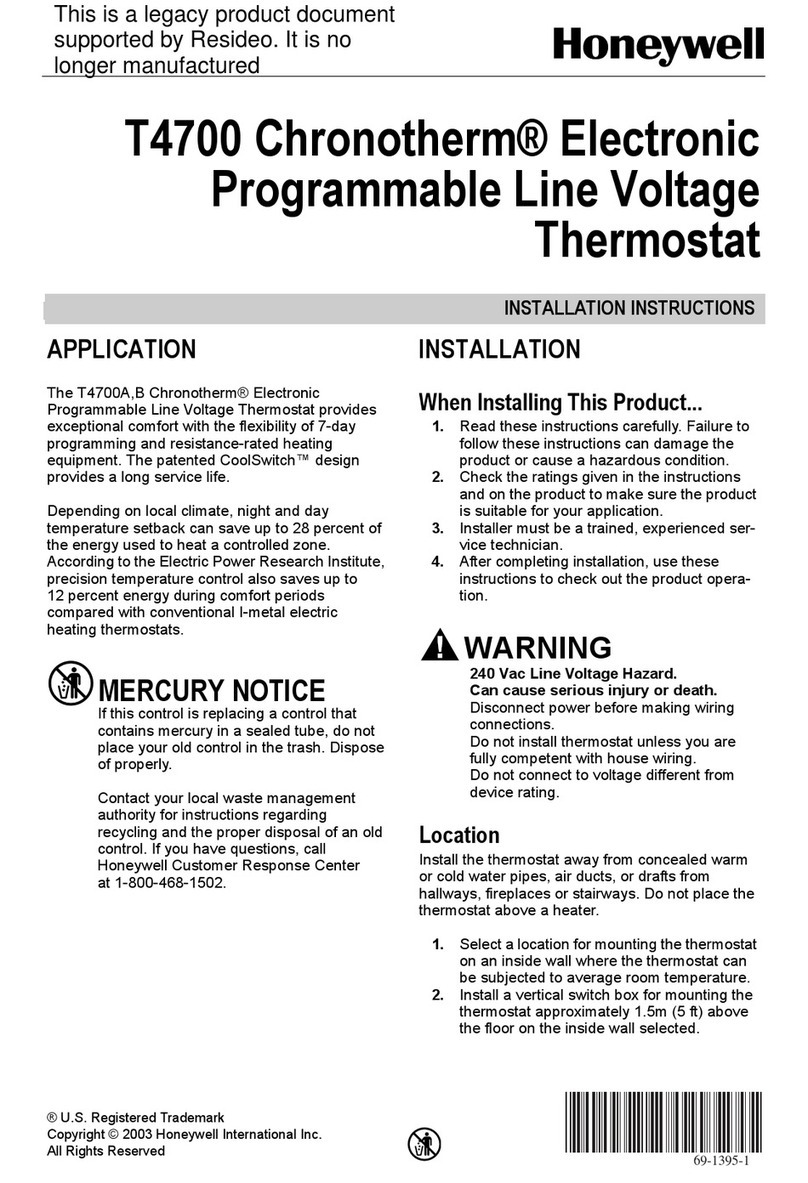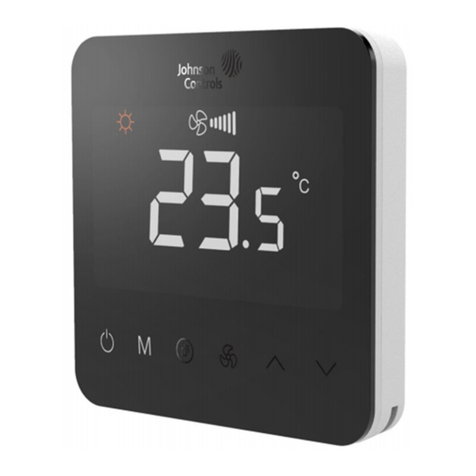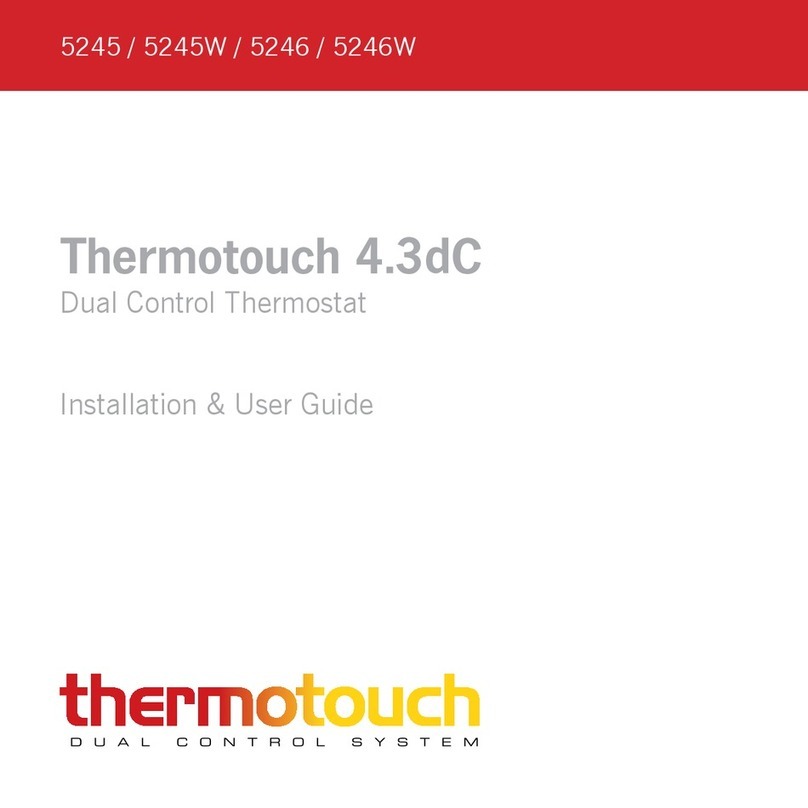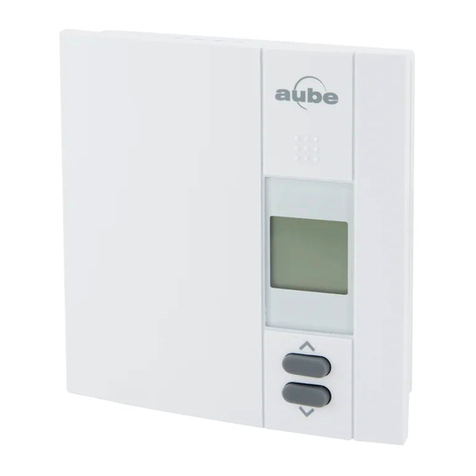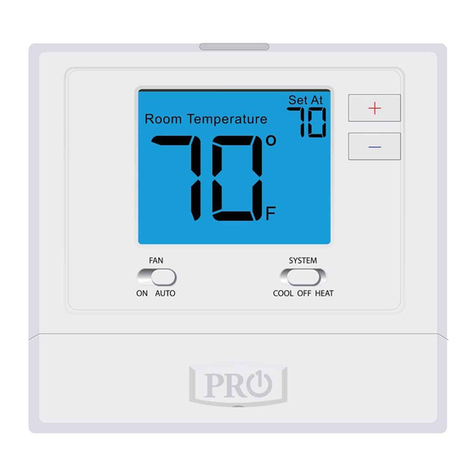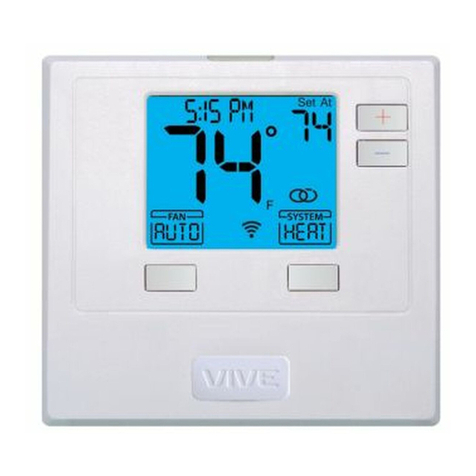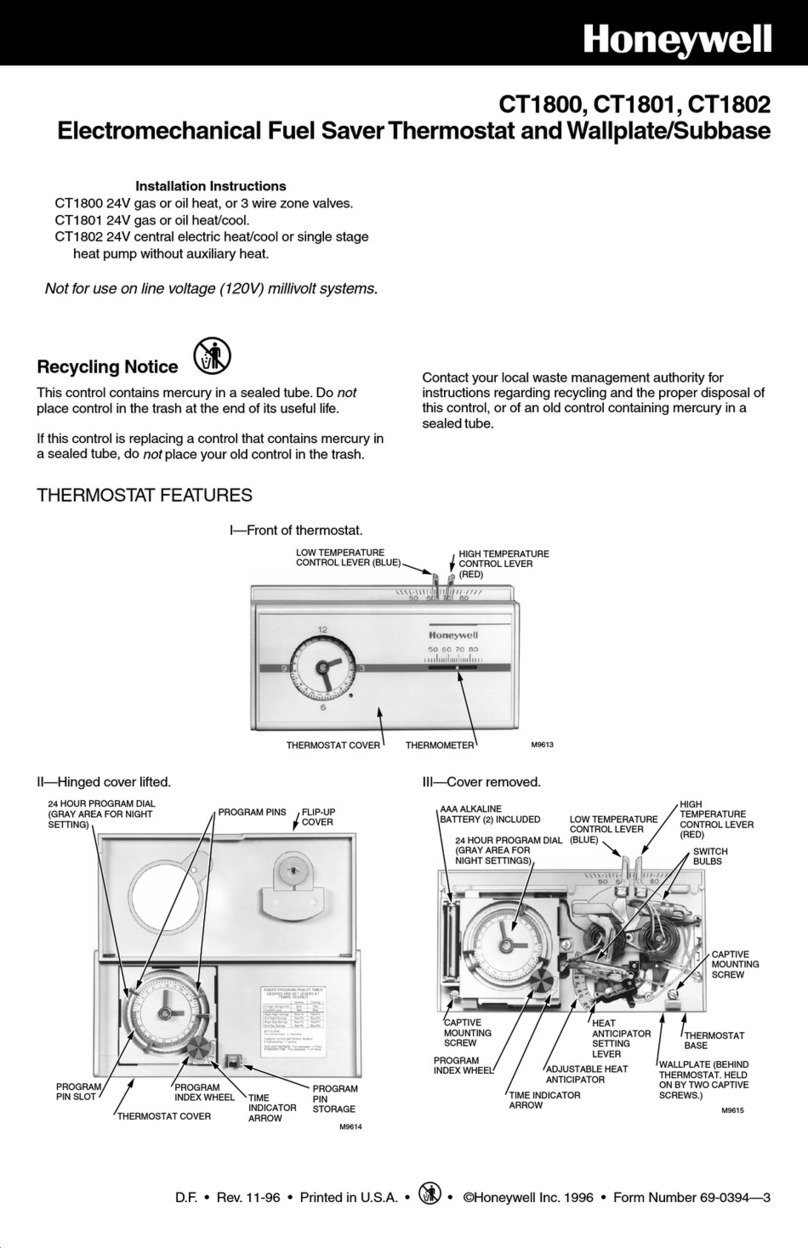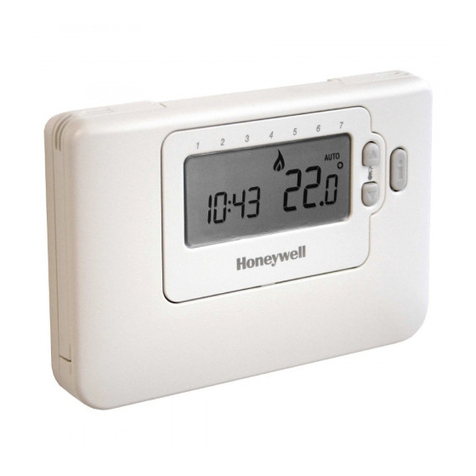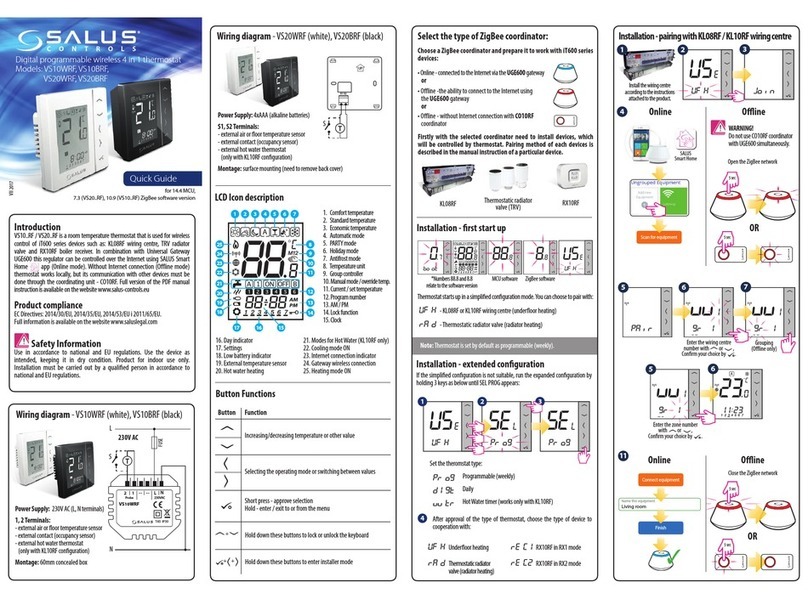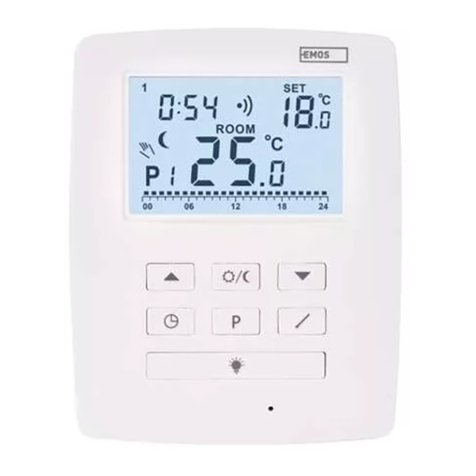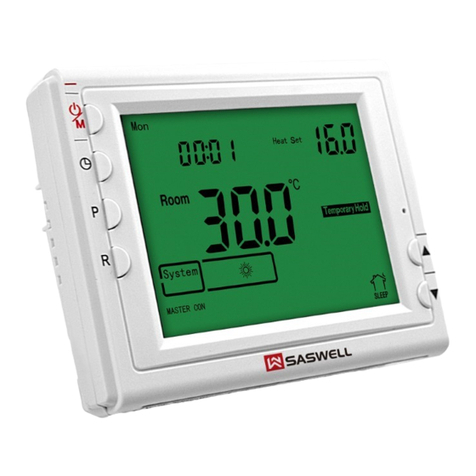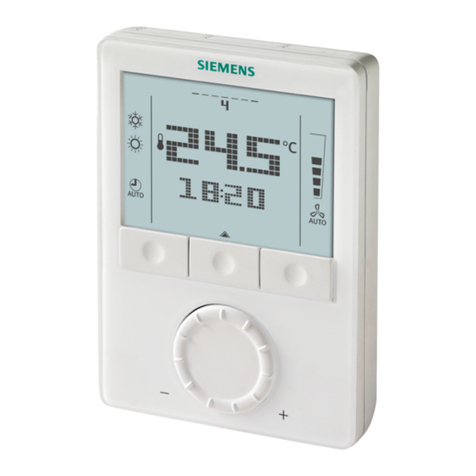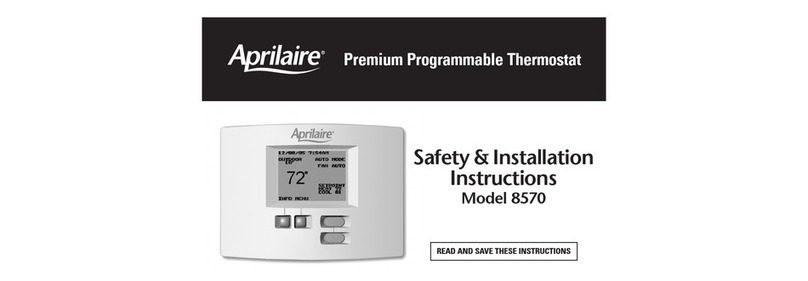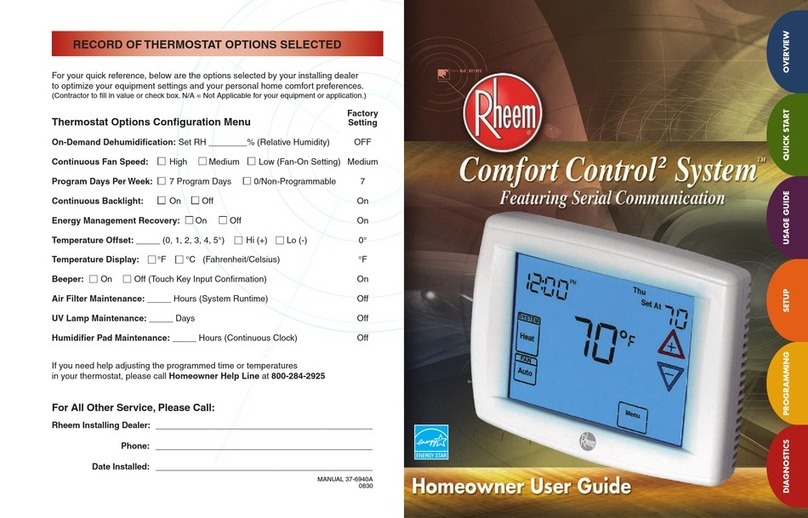
Wiring
Caution:
Electrical Hazard
All components of the control
system and the thermostat
installation must conform to
Class II circuits per the NEC Code.
Warning:
Do not overtighten terminal
block screws, as this can
damage the terminal block.
A damaged terminal block
can keep the thermostat
from tting on the subbase
correctly or cause system
operation issues.
Installation Tip
Max Torque = 6in-lbs.
Wiring
If you are replacing a thermostat,
make note of the terminal
connections on the thermostat that
is being replaced. In some cases
the wiring connections will not be
color coded. For example, the
green wire may not be connected
to the Gterminal.
Loosen the terminal block screws.
Insert wires then retighten terminal
block screws.
Place nonammable insulation into
wall opening to prevent drafts.
1.
2.
3.
Terminal Designations
C
OHeat pump changeover valve
energized in cooling
Heat pump changeover valve
energized in heating
W2 Auxiliary heat relay -Stage 2 heat
RTransformer power
GFan relay
YCompressor relay - Stage 1
heat and cool
Wiring Tips
C Terminal
The C (common wire) terminal does
not have to be connected when the
thermostat is powered by batteries.
Wire Specications
Use shielded or non-shielded 18-22
gauge thermostat wire.
Failure to disconnect the power
before beginning to install this
product can cause electrical shock
or equipment damage.
B
Common wire from system transformer
Wiring Diagrams
Technician Setup Technician Setup
This thermostat has 4 dierent setup congurations. To setup the
thermostat for your particular application:
1. Select COOL, HEAT, EmH, or OFF with the system switch.
2. Press and hold the + and - buttons together for 3 seconds. This
3 second delay is deigned so that homeowners do not accidentally
access the installer settings.
3. Use the + and - to change settings. Note: When you want to exit
the Technician Setup options select OFF using the system switch.
Compressor Short Cycle Delay
The compressor short cycle delay protects the compressor from “short cycling”. This
feature will not allow the compressor to be turned on for 5 minutes after it was last
turned o. Default setting is ON. Selecting OFF with the jumper pin will remove this
delay.
Tech Settings
O
This feature allows the installer
to change the calibration of the
room temperature display. For
example, if the thermostat reads
70 degrees and you would like it
to read 72 then select +2.
Room
Temperature
Calibration
(Select
System OFF)
You can adjust the room
temperature display to read
4˚above or below the factory
calibrated reading.
Cooling
Swing
(Selecting
System COOL)
0.8
The swing setting often called
“cycle rate”, “dierential”or
“anticipation”is adjustable. A
smaller swing setting will cause
more frequent cycles and a larger
swing setting will cause fewer
cycles.
The cooling swing setting
is adjustable from 0.2˚ to
2˚. For example: A swing
setting of 0.5˚will turn the
cooling on at approximately
0.5˚ above the setpoint
and turn the cooling o at
approximately 0.5˚ below
the setpoint.
The swing setting often called
“cycle rate”, “dierential”or
“anticipation”is adjustable. A
smaller swing setting will cause
more frequent cycles and a larger
swing setting will cause fewer
cycles.
The heating swing setting
is adjustable from 0.2˚ to
2˚. For example: A swing
setting of 0.5˚will turn the
heating on at approximately
0.5˚ below the setpoint
and turn the heating o at
approximately 0.5˚ above
the setpoint.
Tech Settings Adjustment Options Default
LCD Will Show
EEmergency heat relay
NOTE: In many systems with no emergency heat relay a jumper can be installed between E and W2.
Power supply
Use either O or B terminals for changeover valve.
Optional 24 VAC common connection when thermostat is used in battery power mode.
Field-supplied jumper
R
Y
C
E
G
W2
O
B
COMPRESSOR
RELAY
FAN RELAY
AUXILIARY
HEAT
COOL CHANGE
OVER VALVE
HEAT CHANGE
OVER VALVE
C
R
L2
L1(HOT)
2H/1C Heat Pump System
Typical 2H/1C Heat Pump System with seperate emergency heat
R
Y
C
E
G
W2
COMPRESSOR
RELAY
EMERGENCY
RELAY
AUXILIARY
HEAT
COOL CHANGE
OVER VALVE
HEAT CHANGE
OVER VALVE
O
B
C
R
L2
L1(HOT)
FAN RELAY
Note: In many systems
with no emergency heat
relay a jumper can be
installed between E and W2.
CA 0
Heating
Swing
(Selecting
System HEAT)
08
08 0.8
When ON, this feature turns o
the Y terminal 45 seconds after
the second stage of heat (W2)
turns on. When OFF, it allows 1st
stage (Y) and 2nd stage (W2) to
run together. (Electric for Aux)
Selectable ON or OFF.
This option should be ON
for DUAL FUEL applications
that use a gas furnace for
auxiliary heat.
Gas Auxiliary
for Heat Pump
(Selecting
System EMH)
OF OFF
6A
Swing Setting Tip
Temperature swing, sometimes called dierential or cycle rate, can be customized for
this individual application. For most applications choose a swing setting that is as
wide as possible without making the occupants uncomfortable.
Reset button.
Select For Cwith the
jumper pin.
F- Fahrenheit
C- Celsius
Select delay on
or o with the
jumper pin.
RH/R
G
Y
C
O
E
W2
RESET
B
C
F
DELAY
RH/R
G
Y
C
O
E
W2
RESET
B
C
F
DELAY
